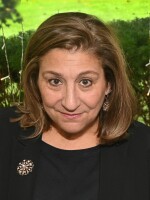Most of the Kansas Congressional delegation, state and local officials as well as the Secretaries of both Agriculture and Homeland Security smiled, shook hands, even hugged as they came together for the latest in a series of ceremonial groundbreakings for the National Bio and Agro-Defense Facility, or NBAF.
The Manhattan, Kansas facility has been in the works for 16 years, said Sen. Pat Roberts, the grandfather of the project, who first pushed for greater food and agriculture safety with Kansas State University officials in 1999.
“Today we are not just celebrating a groundbreaking,” Roberts said.” We’re preparing to provide robust protections for our plant and animal population to keep this nation and it’s economy safe.”
After 9/11, a presidential directive gave new steam to the effort. The newly formed Department of Homeland Security got involved as the country reacted to the possibility of future terrorist attacks.
Secretary of Agriculture Tom Vilsack said Wednesday a facility that gives Americans confidence in the safety and security of their food supply is ultimately good for the economy.
“It allows people to invest, put money aside for college, buy a nicer car, put money aside for retirement,” he said.
Other officials said young science and agriculture students will be able to stay in the state for a job.
Kansas Gov. Sam Brownback, got a standing ovation when he came to the podium. Brownback spearheaded efforts to wring $300 million out of the tight Kansas budget for NBAF in the last few years. The state contributed a quarter of the cost of the $1.25 billion facility.
The lab has been delayed over the years by questions about it's security, necessity and cost. Just this year, the final chunk of federal money was appropriated, giving DHS the green light to move forward.
The facility has tripled in cost over the years and is now expected to be operational in 2022, four years later than originally expected.





